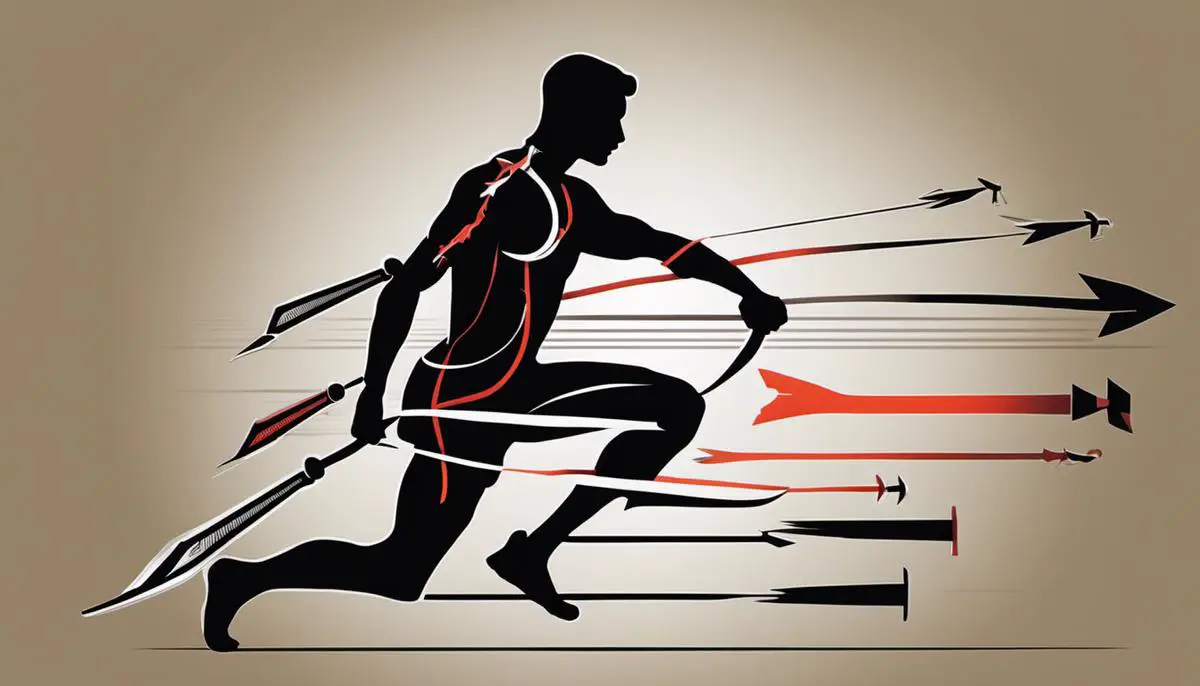Getting better with age isn’t just a cliché. It’s a commitment to a proactive and healthy lifestyle. As men cross the age of 40, they experience distinct physiological changes like a slower metabolism, decreasing muscle mass, and a different pace of recovery after workout sessions. Understanding these changes can determine the direction of your fitness journey. It is vital to choose an exercise regimen that incorporates cardiovascular activities, strength training, and flexibility exercises tailored for men over 40. However, exercise is only half the battle. The role of nutrition and recovery methods in your fitness journey forms the other half. Adapting your diet to adequately support your body’s evolving needs, and ensuring appropriate rest and recovery can enhance the rewards of your fitness routine.
Understanding Body Changes after 40
Understanding the Age-Related Physiological Changes in Men Over 40
Men over 40 often experience certain age-related physiological changes. Knowing about these changes can help you better adapt your exercise routines and maintain a healthy lifestyle.
Post-40 Metabolism in Men
One of the most common changes in men over 40 is a slower metabolism. This means the body is not burning calories as quickly as it did in the past. As a result, men in this age group may find it more challenging to maintain or lose weight. It is important to consider the slower metabolic rate when planning your nutrition and workout routines.
Decreasing Muscle Mass After 40
Muscle mass also tends to decrease as men age. This is often due to lower testosterone levels, which can result in weaker muscles and less energy. Additionally, slower recovery time post-workout can lead to overall decreased physical activity, further contributing to muscle loss. Focusing on resistance and strength training exercises can help mitigate this muscle loss and improve overall body strength and tone.
Changes in Body’s Post-Workout Recovery
Another change you might notice after the age of 40 is how your body recovers after a workout. As men age, the body’s ability to recover from exercise slows down, which can lead to longer periods of muscle soreness and fatigue. This means that it is important to factor in enough rest and recovery time into your fitness routine.
Changes in Bone Density
After 40, men may also experience changes in bone density, causing bones to become thinner and more brittle. This heightens the risk of injuries and fractures. To counteract bone loss, consider adding weight-bearing exercises, such as walking, jogging, or resistance training, to your regimen, along with adequate calcium and vitamin D intake.
Understanding these physiological changes can help you design an effective and sustainable exercise routine that caters to your body’s specific needs post-40. Although aging comes with certain physical changes, maintaining an active lifestyle is key to promoting overall health and well-being at any age.

Photo by christianbuehner on Unsplash
Cardiovascular Exercises for Over 40s
Significance of Cardiovascular Exercises for Men Over 40
Cardiovascular exercises, often referred to as cardio, are crucial for men aged 40 and above. These workouts accentuate the heart rate, enhancing blood circulation throughout the body, and promoting cardiovascular health. Regular cardio workouts can aid in maintaining a healthy weight, reducing the risk of various ailments such as heart disease, certain types of cancer, type 2 diabetes, and stroke. Moreover, cardio exercises can also contribute to improving mental health, relieving stress, and boosting overall mood.
Methods of Cardiovascular Training
One of the key aspects of cardiovascular training for men over 40 is to start with moderate-intensity exercises and gradually increase the intensity as endurance improves. Activities such as brisk walking, swimming, cycling, or even household chores that elevate your heart rate fall under moderate-intensity exercise. According to the American Heart Association, this intensity level should make you sweat and increase your heart rate, but you should still be able to carry on a conversation. High-intensity exercises include jogging, running, or participating in demanding sports like squash or basketball.
Ideal Cardio Regime for Over 40s
An ideal cardiovascular exercise regime for men over 40 can entail at least 150 minutes of moderate-intensity exercise or 75 minutes of vigorous exercise a week, according to the Centers for Disease Control and Prevention (CDC). One can also opt for a combination of both types of exercises, depending on personal comfort and fitness level. It’s important to remember that it doesn’t have to be done all at once. Exercise can be broken down into shorter sessions throughout the day for cumulative benefits.
Incorporating Strength Training with Cardio
Strength training complements cardiovascular exercises well. It’s a type of physical exercise specializing in resistance to induce muscular contraction. This process builds strength, anaerobic endurance, and size of skeletal muscles. When performed in conjunction with cardiovascular exercises, it allows for better fat burning, enhanced muscle tone, and improved overall endurance.
Be Mindful of Your Body
While pushing boundaries is part of any fitness regime, men over 40 should be mindful of their bodies. If one experiences pain, dizziness, or excessive breathlessness during a workout, it could be a signal to slow down or restructure the exercise routine. Regular check-ins with a healthcare provider will help ensure that the chosen cardiovascular exercise regimen is beneficial and safe for your health.
Top Cardiovascular Workouts for Men Over 40
- Brisk Walking: Walking is a low-impact, easy-to-start exercise that improves cardiovascular health.
- Cycling: It’s a rigorous, leg-strengthening workout that boosts cardiovascular fitness.
- Swimming: Swimming is a total-body workout that elevates heart rate without putting strain on joints.
- Running/Jogging: Running, if executed carefully and progressively, can be an effective way to enhance cardiovascular health.
- High-Intensity Interval Training (HIIT): Short periods of intense exercises followed by short periods of rest can boost cardiovascular fitness and promote weight loss.
- Rowing: Rowing, either on a machine or in a boat, is a great full-body workout that strengthens the heart and muscles.
Regular physical activity is crucial for overall health, particularly as one ages. By incorporating these exercises into daily routines, men above the age of 40 can live a healthier, more fulfilling life while keeping cardiovascular diseases at bay.

Strength Training and Flexibility in your 40s
Strength Training for Men Over 40
Strength training is essential for men over 40 to maintain muscle mass and strength, which naturally tend to decrease with age. A simple yet effective strength training routine focuses on foundational exercises: squats, deadlifts, bench press, and overhead press. All these exercises involve multiple muscle groups and various joints, providing comprehensive strength benefits. Start with lighter weights, emphasizing proper form and technique.
-
Squats
Stand with feet hip-width apart, hold a dumbbell in each hand at shoulder level, or use a barbell across the back of your shoulders. Bend your knees, hips back as if sitting down, and lower your body as far as you can. Ensure your knees remain aligned over your feet. Push back up to the standing position.
-
Deadlifts
Stand with feet hip-width apart, dumbbells or barbell on the floor in front of your feet. Bend at your hips and knees, grasp the weights, and lift, keeping your back straight. Lower weights back to the floor in a controlled movement.
-
Bench Press
Lying on a bench, feet firmly on the floor, grasp a barbell with hands a bit wider than shoulder-width apart. Lower the bar to your chest, then press it back up. Dumbbells can also be used for this exercise, one in each hand.
-
Overhead Press
Stand with feet hip-width apart, dumbbell in each hand at shoulder level, or barbell across the front of your shoulders. Press the weights up until your arms are fully extended overhead, then lower back to the shoulder level.
Aim for 2-3 sessions per week, doing 2-3 sets of 8-12 repetitions of each exercise. Over time, as your strength improves, gradually increase the weight used.
Flexibility Training for Men Over 40
Flexibility training is as crucial as strength training for older men, helping to maintain mobility and prevent injuries. Regularly participating in flexibility exercises like stretching, yoga, or Pilates can effectively maintain range of motion and improve overall physical performance.
-
Stretching
Regular, general stretching is important for maintaining flexibility. This includes calf stretches, hamstring stretches, and shoulder and arm stretches. Hold each stretch for 30 seconds without bouncing or forcing the movement.
-
Yoga
Yoga combines flexibility with strength, balance, and mindfulness. Many poses enhance flexibility, such as the downward-facing dog, warrior poses, and cobra pose. Each pose should be held for 5-10 breaths.
-
Pilates
Pilates focuses on core strength, flexibility, and overall body awareness. Exercises like the roll-up, spine stretch, and saw increase flexibility and range of motion.
Initial sessions of yoga and Pilates should ideally be under the guidance of a certified professional to ensure correct technique and avoid injury. Aim for 1-2 sessions per week as per your capacity.
Remember, listening to your body is key in any form of exercise. In case of pain or discomfort, it’s best to stop and seek expert advice. It’s never too late to start exercise; the benefits of staying physically active far outweigh the initial discomfort or effort required.

Nutrition and Recovery for the Middle-aged Man
Understanding the Role of Nutrition in Fitness and Recovery
Nutrition plays a critical part in the health and fitness journey of a man over 40. Primarily, nutritional intake aids recovery post workouts. This is because the body needs to replenish the glycogen that it burned during the exercise, along with repairing muscle proteins. Eating the right food helps facilitate this process.
For instance, consuming a balanced ratio of proteins and carbohydrates within 45 minutes post-workout helps repair muscles and restore energy levels. Proteins like chicken, turkey, eggs, and yogurt, or plant-based options like beans and lentils, are great choices. Combine these with complex carbohydrates like sweet potatoes, brown rice, and whole grain bread to get the necessary energy stores.
Including healthy fats in your diet, such as avocados, nuts, and seeds, is vital. They help in absorbing essential vitamins and maintaining testosterone levels, crucial for men over 40 to support muscle gain or maintain a healthy weight.
Achieving Weight Loss or Muscle Gain Through Nutrition
Your dietary choices can also aid weight loss or muscle gain. Reduced calorie intake coupled with increased protein consumption can promote weight loss. Contrarily, to gain muscles, increase your protein intake and incorporate strength training into your exercise routine. Always consult with a healthcare professional or a dietitian to calculate your calorie and macronutrient needs based on your specific goals and lifestyle.
Fueling Workouts Through Nutrition
What you eat before your workout can potentially affect your performance. Consuming a meal containing proteins, fats, and carbohydrates about 2-3 hours before your exercise can provide you with sustained energy. Quick energy sources like a banana or a handful of dried fruits 30 minutes before exercising can also be beneficial.
Importance of Hydration
Drinking the proper amount of water is vital for men over 40. Hydration supports overall bodily functions and supports workout performance and recovery. The American Council on Exercise recommends drinking 2.7 liters per day for women and 3.7 liters per day for men.
Emphasizing the Value of Sleep in Recovery
Besides nutrition, sleep is another crucial factor in recovery and fitness for men over 40. It is during sleep when most of the body’s recovery and repair occur. Lack of sufficient sleep can interfere with your body’s ability to recover after workouts and can affect your metabolic processes, leading to weight gain and loss of muscle mass. Strive for 7-9 hours of sleep each night to promote optimal recovery.
Exploring Active and Passive Recovery
Active recovery, such as light walking or gentle yoga, can help reduce muscle soreness post-workout. Passive recovery techniques, like massage or foam rolling, can improve flexibility and circulation. Both these methods facilitate faster return to exercise, reducing the risk of injuries and improving overall fitness levels.
In conclusion, maintaining a balanced diet, ensuring adequate hydration, promoting good sleep, and incorporating recovery practices are all essential elements for men over 40 to achieve and maintain their fitness goals.

Your 40s can be a pivotal period not just in terms of career or family but also in shaping your health for the coming years. The right blend of cardiovascular exercises keeps your heart healthy and aids in weight management. Adding strength training to your routine counteracts muscle loss and maintains your physical strength, while flexibility exercises provide mobility and decrease the risk of injuries. Paying attention to the role nutrition plays in bolstering recovery after workouts, fostering weight loss or muscle gain, and fueling your energy for exercises is critical. Similarly, the importance of sleep and other recovery methods in facilitating muscle growth and restoring energy cannot be overlooked. Successfully navigating the fitness challenges presented during this phase can ensure healthier, happier years that lie ahead.
